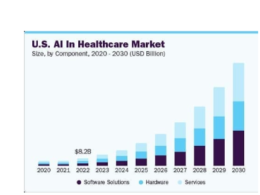the
healthtransformation
.foundation
Joaquim Cardoso MSc
February 1, 2024
This executive summary is based on the article “Human sight still cheaper than most AI replacements, MIT finds”, published by Cio Dive and written by Roberto Torres, on January 29, 2024
What is the message?
MIT researchers found that employing artificial intelligence (AI) instead of humans for vision-based tasks is financially viable in only about one-fourth of jobs.
The study emphasizes that, at present, the majority of U.S. businesses would opt against automating vision-based tasks due to the high costs associated with implementing AI systems.

ONE PAGE SUMMARY
What are the key points?
Limited Cost-Effectiveness: The study scrutinizes tasks like quality inspections or medical image scans, revealing that only 23% of worker compensation exposed to AI computer vision is cost-effective for firms to automate. The large upfront costs of AI systems outweigh the potential benefits, especially for businesses without scale.
Bakery Inspection: The researchers provide an example of a bakery considering replacing visual inspections with a computer vision system. The costs of creating and maintaining such a system surpass the affordability of continuing with human workers for the task.
Data Availability Challenges: Besides costs, data availability poses a challenge for computer vision replacements. A case study involving an industrial parts manufacturer highlights that proprietary parts may lack sufficient data for accurate computer vision identification.
Successful AI Implementation Depends on Scalability: While some businesses, like Home Depot, have successfully deployed computer vision for tasks such as detecting out-of-stock items, the applicability of AI often hinges on its scalability.
What are the key statistics?
Only 23% of worker compensation exposed to AI computer vision is deemed cost-effective for automation.
Goldman Sachs estimates that nearly two-thirds of global positions could be partially automated through AI.
What are the key examples?
Bakery Inspection: The study uses the example of a bakery opting against a computer vision system for ingredient inspections due to high implementation costs.
Industrial Parts Manufacturer: A case study reveals that data limitations on proprietary parts hinder the viability of automating tasks through computer vision.
Conclusion
While companies are eager to adopt AI for cost-cutting and increased productivity, MIT’s findings suggest that, for now, the financial feasibility of automating vision-based tasks with AI remains limited.
Executives must carefully weigh the upfront costs, scalability, and data challenges before widespread implementation.
To read the original publication, click here.












